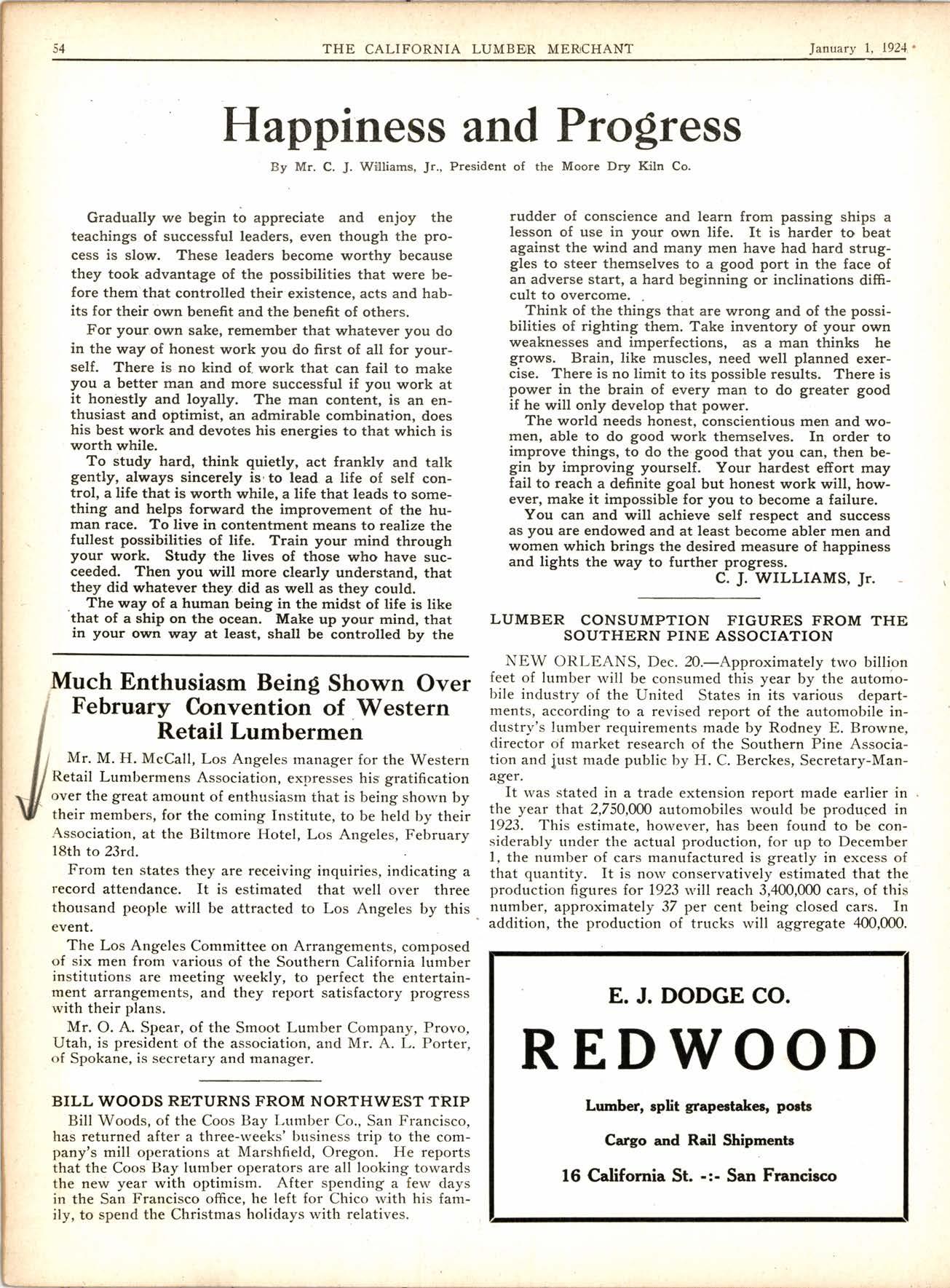
3 minute read
California Leads United States in Forest Fires
WALLACE HUTCHINSON A$t. Dirt. Fcnatcr U. S. Forcat Scnicc
The u'orst forest fire State in the Union. This in brief is California's National Forest fire record f.or 1923, according to report of the U. S. Forest Service headquarters in this city, just made public.
More fires rvere started in the natiorral Forests of the Golden State this season than during any year since 1917. Out of the total of. 1,367 fires that occurred, nearly 50 per cent resulted from lightning; the remainder being due to human carelessness, and were, therefore, preventable. Of the man-caused fires, tobacco smokers started 358 or 50 per cent, and campers 117 or 16 per cent. Railroads, brush-burners, lumbering and incendiarism accottntecl for the rest.
The total area burned over b1' fires 'rvithin the National Forests was 173,257 acres, of rvhich 145,437 actres were Government land, and 26,8N acres private holdings. The Forest Service spent more than $100.00O irr extinguishing these conflagrations.
In the Angeles, Santa Barbara and Cleveland Forests of southern California there rvere 191 fires which destroved the tree and brush growth on I27,430 acres. All but 10,000 acres of this total resulted largely from two big fires in the Santa Barbara National Forest; the other southern forests experiencing an extremely favorable fire season.
In northern California the Plumas National Forest with 224 fires holds first place, followed by the Shasta Forest with 154 fires, Lassen Forest, 127 fires, and the Klamath Forest with 103 fires. The Trinity Forest had26 incendiarl fires, and the Plumas 16; the total of fires on all National Forests due to incendiarism numbering 76. The greatest damage by fire in the northern part of the State occurred on the California Forest rvhere n,643 acres were swept by flames. The Mono National Forest, on the east slope of the Sierras, had only 6 fires which burned over 33 acres.
Eighty-six per cent of all fires that started in the National Forests rvere extinguished by forest rangers and co- operators before they had covered an area of more than l0 acres each. Forest officers also handled 152 larv enforcement cases against violators of the State and Federal fire laws, and have secnred convictions, to date, in 120 cases.
"There is little for Californians to be proucl of in this record," said District Forester Paul G. Redington. "\Vhile there has been a slight decrease in the total ntrrnber of man-caused fires in the National Forests, there has also been a startling increase in the conflagrations directir' chargeable to users of tobacco. The "tailormade" cigarette and the unextinguished match still continue to be the greatest enemies of our magnificent forests. It is surprising, also to note the number of fires started by careless the woods, and require visitors rvho desire to build fires to use only designated camping and picnic grounds. The Forest Service norv requires that everyone rvho intends to build a fire in a National Forest secure a camp-fire permit, on the back of rvhich are specific rules in regard to the use of fire in the woods. Rut even this system does not give us complete immunity against conflagrations started by careless campers.
"The Forest Service rvoulcl regret exceedingly," said N'Ir. Redington, "to have to issue orders restricting the public use of our National Forests which cover the greater part of the mountain regions of the State and constitute a most campers, especially in vieu' of the intensive educatiotral campaign that has been u'aged these many years b1' the Forest Service, State Forester and other agencies througlrout the State.
"IJncle Satn is a long suffering indiviclual," cotrtiutted the District Forester, "but there is no question that unless there is a marked change, as regards fires, in the attitude and actions of the public that use the National Forests as a summer vacation land. lve shall be obliged to periodically close certain popttlar recreation forests, rvhere there is a big fire hazard,, to all forms of picnic and camp fires. In other localities u'e mav have to place a ban ou srnoking in popular playgronnd. But if such action is taken, the public rvill only have itself to blame. One thing is certain-we have got to reduce the number of man-caused fires, and if educational rnethods fail to produce the desired results'the Government is prepared to take more stringent measures. I arn confident, however, that with an awakening public sentiment in regard to the needless destruction caused by forest fires, and the unclualified support of the press, educational institutions, commercial organizations, tvomen's clubs and citizens of the State. we shall be able to successfully solve the fire problem which is so vital to the prosperity and rvell being of California.











